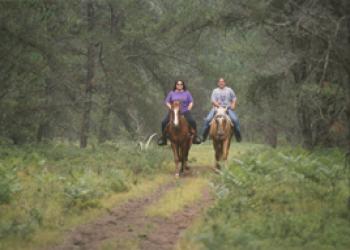Hiawatha National Forest in Michigan's Upper Peninsula
Your Great Lakes National Forest
Located in Michigan's wild and scenic Upper Peninsula, the Hiawatha National Forest's dramatic shorelines lie nestled up to Lakes Superior, Huron and Michigan -- three of the five great lakes. Our lakeshores, lighthouses, islands and abundant snow create a place of respite and play within a day's drive of urban and rural areas of Michigan, Wisconsin, other nearby states and international locations.












